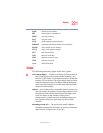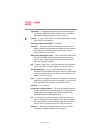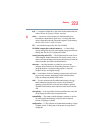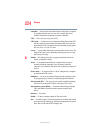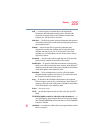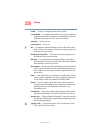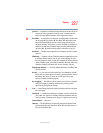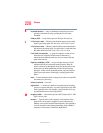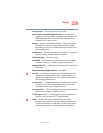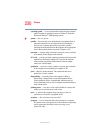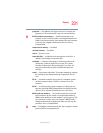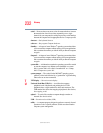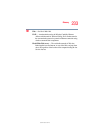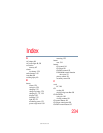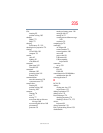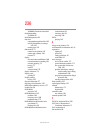
229
Glossary
5.375 x 8.375 ver 2.3
microprocessor — See central processing unit (CPU).
MIDI (Musical Instrument Digital Interface) — A standard for
connecting musical instruments, synthesizers, and computers. The
MIDI standard provides a way of translating music into a form
computers can use, and vice versa.
modem — Short for “modulator/demodulator.” A device that converts
information from digital to analog and back to digital, enabling
information to pass back and forth between digital computers and
analog telephone lines.
motherboard — The main circuit board in the computer. It contains the
processor, memory, and other primary components.
MS-DOS prompt — See system prompt.
multimedia — A combination of two or more media, such as sound,
animation, and video in a computer program or presentation.
multi-function drive -- A DVD drive that can read and write to CD and
DVD media.
Musical Instrument Digital Interface — See MIDI.
N
network — A collection of computers and associated devices that are
connected by communications facilities. A network allows you to
share data and peripheral devices, such as printers, with other users
and to exchange electronic mail.
non-interlaced — A method of refreshing a computer screen, in which
each pixel of every line is refreshed as the electron beam scans
across and down the screen. Compare interlaced.
non-system disk — A disk for storing programs and data that cannot be
used to start the computer. Compare system disk.
NT file system (NTFS) — An advanced file system designed for use
specifically with the Windows NT
®
operating system.
O
online — Available through the computer. Online may refer to
information being read from your own computer’s hard disk, such
as online documentation or online help, or to information coming
from another company on a company network or the Internet.



